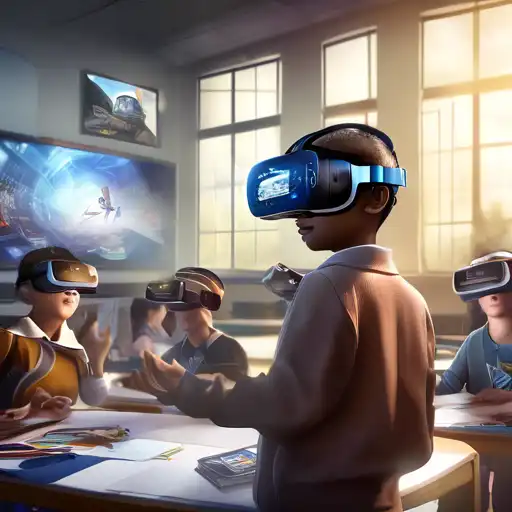Introduction to Virtual Reality in Education
Virtual Reality (VR) is revolutionizing the educational landscape, offering immersive learning experiences that were once unimaginable. This technology transports students to virtual worlds, making learning more engaging, interactive, and effective. As we delve into the potential of VR for education, it's clear that we're standing on the brink of a new era in teaching and learning.
The Benefits of Virtual Reality for Students
VR in education provides numerous benefits, including enhanced engagement, improved retention rates, and the ability to simulate real-world scenarios. Students can explore ancient civilizations, dissect virtual frogs, or even walk on Mars, all from the safety of their classroom. This hands-on approach caters to various learning styles, making education more accessible to everyone.
Engagement and Motivation
One of the most significant advantages of VR is its ability to captivate students' attention. Traditional learning methods often struggle to maintain engagement, but VR's immersive nature ensures that students are not just passive recipients of information but active participants in their learning journey.
Safe Learning Environment
VR also offers a safe space for students to experiment and make mistakes without real-world consequences. Whether it's conducting complex chemical experiments or practicing public speaking, VR provides a risk-free environment for learning and growth.
Implementing VR in Classrooms
While the benefits are clear, integrating VR into educational settings requires careful planning. Schools and institutions must consider the cost of VR equipment, the need for teacher training, and the development of curriculum-aligned VR content. However, with the right approach, VR can become a valuable tool in enhancing educational outcomes.
Overcoming Challenges
Despite its potential, the adoption of VR in education faces several hurdles. High costs and technological barriers can limit access for some schools. Yet, as technology advances and becomes more affordable, these challenges are gradually being overcome, paving the way for wider adoption.
The Future of VR in Education
The future of VR in education is bright, with ongoing advancements in technology making it more accessible and effective. As VR continues to evolve, it will play an increasingly important role in shaping the future of education, offering students unparalleled learning experiences that prepare them for the challenges of tomorrow.
Expanding Horizons
Looking ahead, VR has the potential to transform not just how we learn, but what we learn. From virtual field trips to collaborative projects with students around the globe, VR is expanding the horizons of education, making learning a truly global experience.
In conclusion, Virtual Reality is setting the stage for a new era in education. By providing immersive, engaging, and effective learning experiences, VR is not just enhancing education but redefining it. As we continue to explore the possibilities, one thing is clear: the future of learning is virtual.
